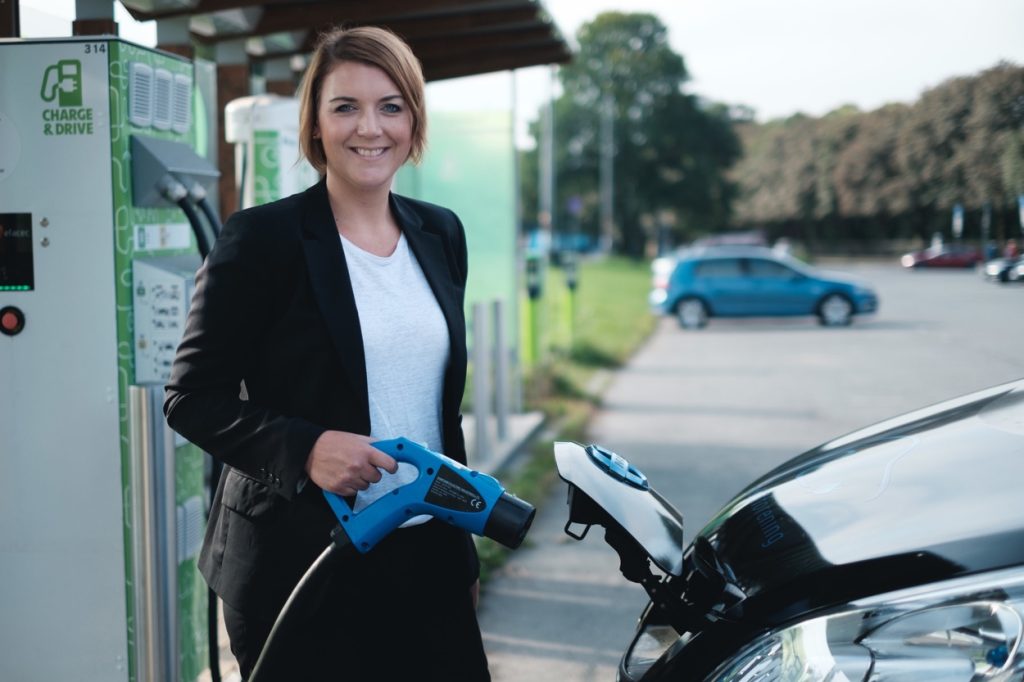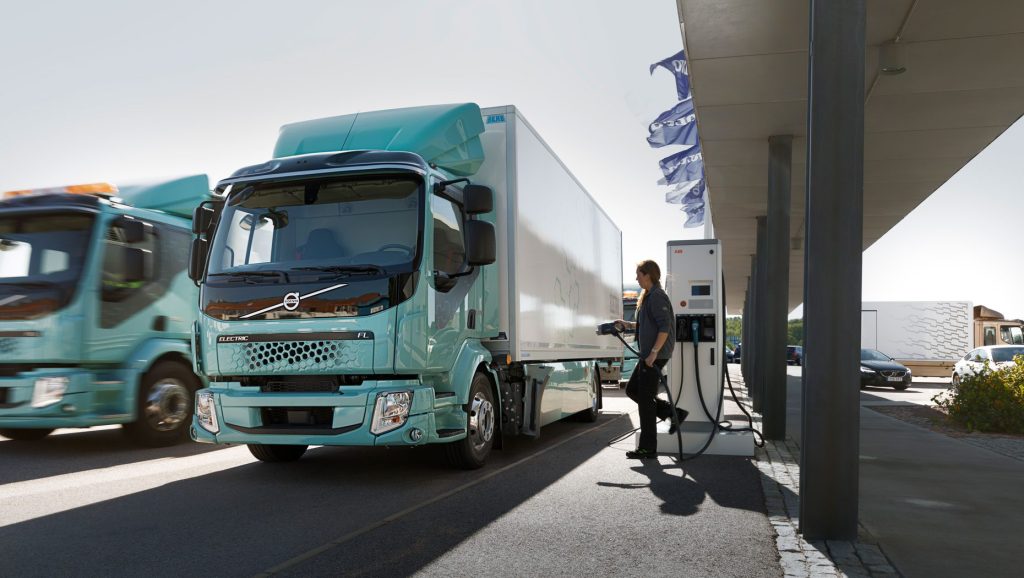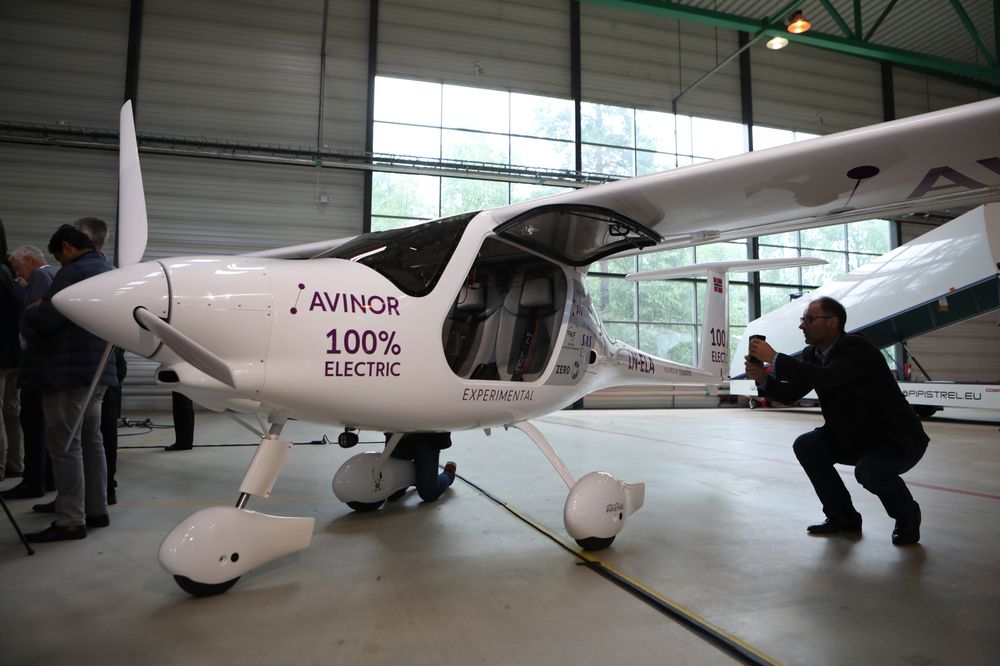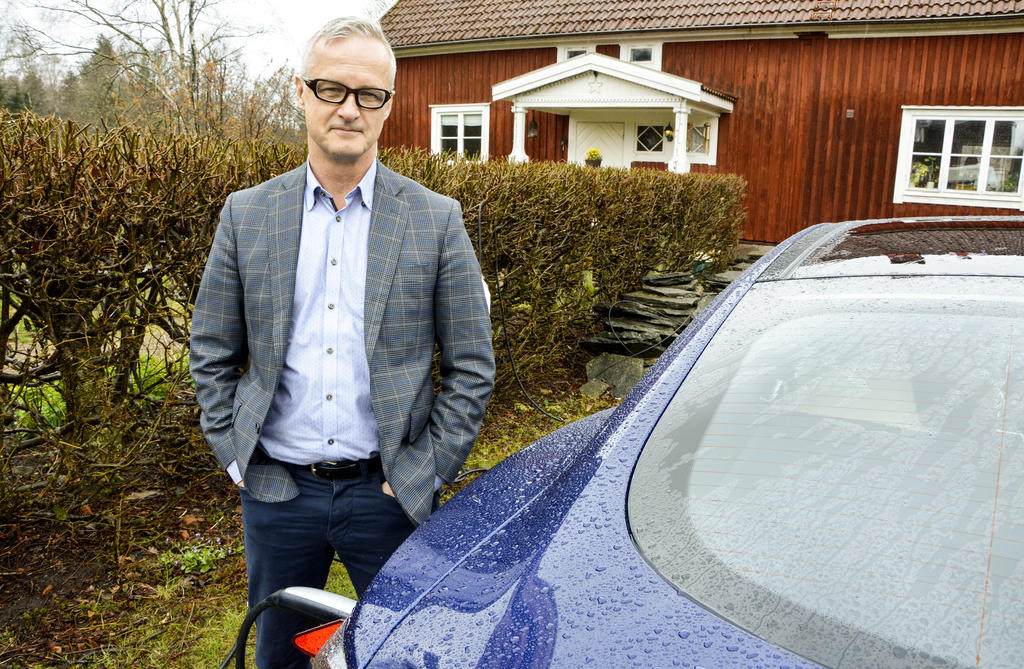Watching Norway’s progress with vehicle electrification from this end of the world can be a conflicted experience. You have to admire a country of a similar size to New Zealand so clearly setting the pace, with more than half of Norway’s new car sales now EVs of some description. But it also provokes an uncomfortable question: why can’t we do it, too?
Christina Bu believes we can – we have to – but it’s going to require a lot more ambition from our leaders to get there. Bu, the Secretary General of the Norwegian EV Association, visited this country last year at the invitation of Drive Electric in an effort to highlight what New Zealand could learn from Norway’s example. Notwithstanding significant differences – not least the two countries very different taxation regimes and historic appetite for public subsidisation – there are a lot of parallels, including similar sized populations and an abundance of renewable energy.
She argues that price is a key factor governing EV uptake, and that New Zealand should follow Norway’s lead by taxing high-emissions vehicles and seriously incentivising consumers to buy EVs. (In her country, anyone who buys a fully electric new vehicle is exempt from a 25% VAT.)
She has plenty of other policy suggestions, but also a warning. During the next few years global demand for EVs is likely to outstrip supply, and the car manufacturers will prioritise those markets where they see a concerted push for faster uptake.
In other words, New Zealand needs to keep up with the electric revolution, because, as she told RNZ during her visit, “this is happening, and faster than anyone can imagine”.
Recently, participants at the 2019 Nordic EV Summit got a sense of that pace. Held in Oslo in March, the summit included presentations on everything from the electrification of aviation and shipping – more imminent than you’d think – to recent developments in smart charging, to strategies for electrifying large fleets, to the advent of eHighways.
Meridian Procurement Manager Nick Robilliard attended – he gave a presentation on Meridian’s efforts to electrify its fleet. Also in Oslo was Liz Yeaman, a Wellington-based consultant focused on renewable energy for transport. So, what did they learn? What’s happening out there that New Zealand needs to take on board?
Nick Robilliard prefaces his take on the summit with a caveat: New Zealand isn’t Norway or Sweden or the UK.
” We can learn lessons from these other countries and think about applying them here, but there are going to be things we have to do differently in this part of the world, and we’re going to have to do what kiwis do – innovate.”
Similarly, there are advantages in taking a measured approach. “For example, I think Norway has over-capitalised in their charging infrastructure with technology that you might say is first-generation,” he says. “By being a reasonably fast follower we can be agile and not get left behind, but do things in a way that is specific to this market and where we don’t have to go back and redo stuff. We can do this in a way that is smart and future-proofed.
Nick says Oslo both provided fresh insights and confirmed some of his thinking. On electrifying large fleets, for example: “Lease companies have been cautious to date, especially in New Zealand. What we saw over there was that some of the larger companies have produced EV lease service plans that make it affordable to electrify fleets by thinking laterally.”
Indeed, that idea of thinking creatively emerged as something of a theme in the fleet discussion at the summit. As Nick puts it, “Where you source the vehicle from may not be traditional; how long you own it and how you dispose of it may also not be traditional. Do you even need a brand new vehicle? Do you need all these vehicles, or can you use car sharing?”
Another area of keen interest: EV charging infractructure. There’s been no end of publicity about the rollout of DC fast-charging stations in places such as Norway, but rather less about the unglamorous but vital AC options.
“One of the big pieces of the puzzle, which Meridian has already identified, is AC single-phase origin-destination charging – the stuff that’s outside the shopping mall, the trade store and other places where you might stop for 30 minutes to an hour and top up. Making that accessible hugely helps when the majority of EVs on our roads have a 120 to 250km range.”
The summit heard about what retail and service providers have provided for their EV-driving customers in the UK and elsewhere. “It’s a case of the market responding. No one has been that intentional from a policy perspective, it’s just people going, ‘Here’s an opportunity to do something cool and change the experience for our customers’. And what’s interesting is how that can massively uplift the user’s experience when they’re out and about during the day.”
What of the pressing topic of incentives for consumers to buy EVs? Drive Electric has pushed the case for a feebate system – taxing high emissions vehicles to fund rebates for low-emission cars – but this and other potential incentives have yet to be considered by Cabinet. Nick says he was impressed by the Swedish ‘Bonus Malus’ feebate system (see sidebar story), which strikes him as a better fit for this country than the Norwegian approach.
“It’s a really simple measure that helps with the relatively high capital cost of purchasing an EV. It’s just one of many things we need to do to increase EV penetration in New Zealand.”
Feebate schemes tend to raise issues about equity. The Nordic Summit didn’t ignore these stickier questions. Nick came away from Oslo more convinced than ever that there is a huge role to be played by car sharing and Mobility-as-a-Service (MaaS) more generally to lift EV penetration.
“Let’s be fair: In New Zealand you have to have an income well above the median to afford an EV. Car share makes electric mobility available to everyone,” he says, adding that the summit highlighted some of the technological innovation happening in this area. “When we think about how we do Mobility-as-a-Service there are some really smart tools available: ‘I need to get from here to here at this time, what are the options?’ Also, there are clever software technologies that make it really easy to plan your EV journey and choose the right form of electrified transport to meet your needs.”
The summit tackled other concerns raised by the EV revolution, including the ethics of using lithium-ion batteries. There is disquiet about environmental degradation caused by lithium mining and the disposal of dead batteries. Meanwhile, cobalt, a critical element that is largely sourced from the Democratic Republic of Congo, is known to be acquired through mining operations known to use children. This is clearly unacceptable and new inroads are and must be found to eradicate these unacceptable practices.
Some progress is being made. Panasonic is developing a cobalt-free EV battery, and Tesla, which has reduced the cobalt in its batteries to less than three per cent, aims to do the same.
Nick believes lithium-ion will eventually be supplanted by new technology. Even so, he says, “We have to acknowledge that things aren’t perfect and that, like the mobile phone, there are some dirty elements here and we can’t hide from that. We need to be advocates for moving the technology on, because we’re not happy with the supply chain around lithium.”

Liz Yeaman
For Liz Yeaman, there was plenty at the Nordic summit to suggest New Zealand is likely to have a significant opportunity to electrify its transport sector well beyond passenger EVs. Liz, Managing Director of Retyna, was particularly keen to hear what’s coming next for sectors such as freight and aviation, and left Oslo heartened by the pace of developments and of their relevance to this country.
She notes that 70 per cent of freight movements in New Zealand are not long-distance hauls but happen within regions, suggesting that we would be well-placed to adopt medium-sized electric trucks. While the summit was disappointingly light on detail about advances from the OEMs, there was one arresting piece of news: Volvo has just deployed its first 175 kW ultra-faster charger for its e-trucks.
“It really interesting to hear that they are now starting ultra-fast charging of trucks,” says Liz. “Most trucks will charge at the depot, but the quicker they can do that, the more useful it will be.”
There are hurdles to the adoption of e-trucks, not least a risk-averse mindset among trucking companies and the challenge of financing the infrastructure needed to charge a fleet rather than just the odd freight vehicle. At Olso, the summit heard from US-based clean transport non-profit CALSTART, which has a particular focus on electric bus and e-truck grid integration. “Buses have led the electrification of heavy vehicles – not surprisingly as their fixed route schedules make charging easy,” says Liz. “We need to transfer the lessons and experience from e-buses to e-trucks.”
Also potentially relevant to New Zealand was a presentation on developments in electrifying the ‘last mile’ of freight delivery. In Oslo and Bergen, international supply chain company DB Schenker has launched a project to shift 80 per cent of city centre freight to electric. Goods arrive by semi-trailer at newly built cross-docking terminals, and deliveries are completed using e-vans and e-cargo bikes. The latter are capable of carrying a 300 kg load.
Scandinavian countries are historically better equipped with cycling infrastructure than New Zealand, but that’s changing. Could e-cargo bikes become part of the supply chain here?
“It seems quirky, but when you see what’s happened with Lime scooters, which also seemed quirky a couple of years ago, you can see that as you get more cycling infrastructure you will get more activity, including e-cargo bikes helping with that last mile delivery.”
Finally, there were some attention-grabbing predictions made about the future electrification of commercial aviation, once the stuff of science fiction, now looking entirely feasible, with the likes of Airbus engaged in developing electric and hybrid-electric propulsion. According to Liz, Norwegian airport operator Avinor has set a target of electrifying all domestic aviation by 2040, with incentives such as free charging to encourage the uptake of light electric aircraft. Avinor CEO Dag Falk-Petersen told the summit to expect to see the first short-haul electric flights for 12-seaters within the next two years, and longer commercial flights in another decade.
“It’s very exciting,” says Liz, who notes the close parallels between Norway and New Zealand in our dependence on aviation for high-speed passenger transport, and high levels of renewable electricity generation. She also points out that Zephyr Airworks’ prototype 100 per cent electric and autonomous air taxi is currently testing in Canterbury.
“Electrified flights of up to one-and-a-half hours would cover a lot of the air travel that happens within New Zealand,” she says. “It’s coming hard and fast.”
Case Study – Bonus Malus
Let the dirty vehicles pay for the clean ones. That’s the nub of Sweden’s new ‘Bonus Malus’ scheme, by which buyers of new cars with low CO2 emissions get an attractive bonus, paid for by a punitive tax levied on vehicles at the opposite end of the spectrum. The proverbial carrot-and-stick policy (in Latin, ‘bonus’ means ‘good’ and ‘malus’ translates as ‘bad’) came into effect in July 2018, one of a suite of policies designed to help Sweden achieve its ambitious target of a 70 per cent reduction in emissions from domestic transport compared with 2010 levels by the end of the next decade.
Jakob Lagercrantz is co-founder of the 2030 Secretariat, a coalition of private and public partners formed to keep the pressure on the Swedish transport sector to go fossil-fuel free. He says a critical feature of the scheme, which was modelled on something similar in France, is that it is entirely self-funding. “It doesn’t cost the Government anything at all.”
How does it work? As of last July, buyers of any new petrol or diesel vehicle that emits above 95 grams of CO2 per kilometre are stung with an increased annual ownership tax – the malus – for the first three years after registration. The more you emit, the steeper the levy, so the owner of a diesel-fueled Volvo with a C02 value of 152g/km, for example, will have to pay 720 euros ($NZ 1230) annually for three years. By contrast, anyone who buys a car with emissions between zero and 60 grams per kilometre receives a bonus at purchase. Again, it’s on a sliding scale, with zero emission BEVs and FCEVs receiving a 5,700 euro ($NZ9738) rebate.
In the month of the feebate’s implementation, EV registrations in Sweden hit a historic high for that time of 18 per cent. “We’re now projecting a 20 per cent share of newly sold cars that are chargeable, which is the highest in the world after Norway,” says Jakob. “People are turning away from high emission cars.”
The Bonus Malus is not the only cause of that shift, but it’s a significant contributor.
“It’s a cheap system, a good system. It’s liked by the car industry because it’s predictable and clear – and that’s an important part of any system you implement: it has to be understandable to society.”
Another strength is that the subsidies are committed to for at least the next ten years, giving EV buyers some reliability. At the same time, the parameters can be tweaked periodically, depending on the response. “One of the big challenges is to get the breaking points of the curve right – look at France, they’ve changed their curve eight times,” says Jakob.
He forsees the bonus being paid out over a long period to foil car companies that currently pocket the bonus after registering vehicles then sell them in Norway. “I also think we’ll see the malus staying with the car longer. We want it there for at least the first second-hand purchase.”
About Drive Electric
Drive Electric is a not-for-profit membership organisation with one goal – making electric mobility in New Zealand mainstream.
Not just because it’s the right thing to do – and it is, for the sake of our future and our children’s future – but because it makes sense. The technology and the infrastructure are here, right now.
Our membership includes used car importers and distributors, OEMs, charging infrastructure providers, electricity generators, distributors and retailers, electric vehicle service equipment suppliers and electric vehicle users.
To join Drive Electric or find out more, please email drive@driveelectric.org.nz or visit driveelectric.org.nz.









